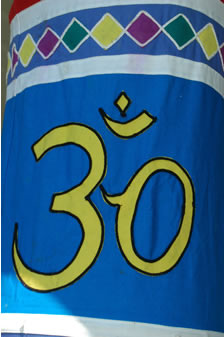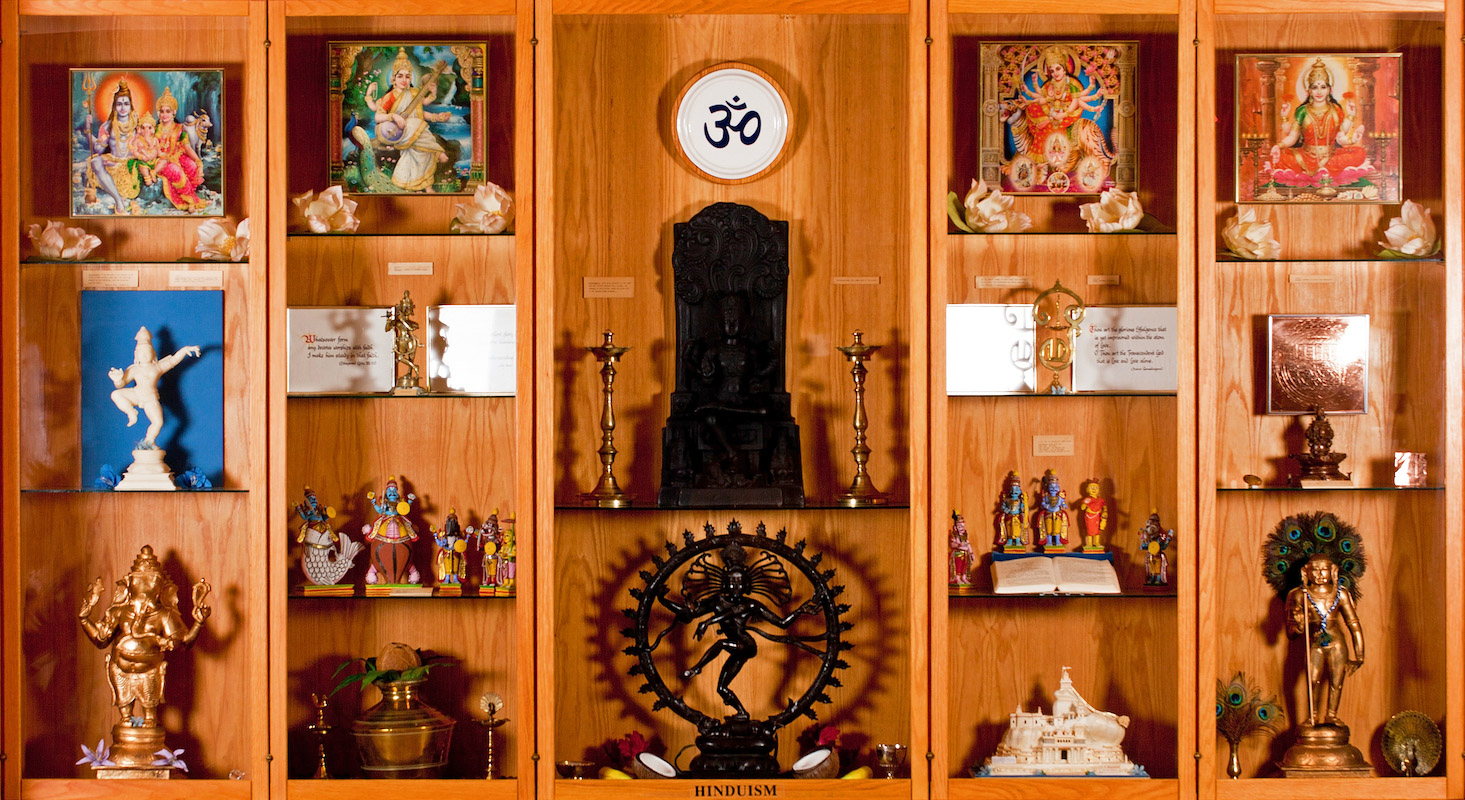Hinduism
Yama (Abstinence)
- Ahimsa – Non-violence
- Satya -Truthfulness
- Asteya – Non-stealing
- Brahmacharya – Continence
- Aparigraha – Non-greed
.
Niyama (Observance)
- Saucha – Purity
- Santosha – Contentment
- Tapas – Austerity
- Svadhyaya – Spiritual Study
- Ishvarapranidhana – Self-surrender to God

Nataraja
“Howsoever people approach me, even so do I welcome them; for the paths that they take from every side are mine.”
—Bhagavad Gita
That great spiritual light of modern India, H. H. Sri Swami Sivananda of Rishikesh, compared Hinduism to a melon. He explained that a melon is divided into various sections on the rind, yet, when it is opened, it reveals the same sweet, undivided flesh throughout. Hindus worship the Divine in many different ways and forms.
Nevertheless, behind each Hindu sect is the principle of unity and the goal of realizing the oneness of the spiritual Self and the Absolute. True Hinduism is true universalism; the Hindu accepts, and even embraces, all paths to the Truth. He or she honors Truth wherever it may appear and whatever garb it may wear.
The roots of Hinduism, which is also known as Sanatana Dharma, or the eternal religion, can be traced to the Rig Veda, perhaps humanity’s earliest spiritual text. Ancient rishis (seers) “heard” or “saw” the four Vedas in deep meditation. No individual can be called the author of these ideas. They already existed, and the rishis simply “discovered” them.
The simple, joyous praise and wonder of the Vedas flowered into the philosophy of Vedanta found in the scriptures called the Upanishads. These truths became more accessible in the epic poems, The Ramayana and Srimad Mahabharata.
The crest jewel of this tradition is a portion of the Mahabharata known as the Bhagavad Gita. This dialogue between a man and God beautifully describes the human dilemma and necessary steps to salvation. In the Gita, Arjuna represents all people. After many objections and rationalizations, he surrenders his small will to God in the form of Lord Krishna. By Grace, Arjuna is then blessed with a vision of the Absolute.
Many Hindus follow the ancient teachings of Yoga. Yoga is the Sanskrit word for “yoke” or “union.” To be a successful yogi in the ultimate sense is to be in a state of union with the Divine. Traditionally, the word Yoga by itself refers to Raja Yoga, the science of the mind; the primary text of Raja Yoga is called the Yoga Sutras of Patanjali. There are yogic methods for those of active, introspective, intellectual, or devotional natures, as well as a system of physical postures to promote suppleness and dynamic health. These Yoga practices are based on a strict moral code called Yama (abstinence) and Niyama (observance).
The concept of rebirth is also a part of Hindu thought. Human attachment to earthly things creates karma and necessitates reincarnation. The Hindu concept of karma, the law of action and reaction, is described in the following passage from the Upanishads: “As is a person’s desire, so is his will; and as his will, so is his deed; and whatever deeds he does, that will he reap.”
Hinduism Display in LOTUS All Faiths Hall
All Faiths Hall Quotations
“Whatsoever form any devotee worships with faith, I make him steady in that faith.”
—Bhagavad Gita
“Let us meditate on the excellent glory of that Divine Being who illumines everything. May He guide our understanding.”
—Rig Veda
“What avail is learning if they do not worship the benign Feet of the Pure Intelligence—God?”
—Tirukkural
“Thou art the glorious Effulgence that is yet imprisoned within the atom of Love. O, Thou art the Transcendent God that is Love and Love alone.”—Saint Ramalingam

